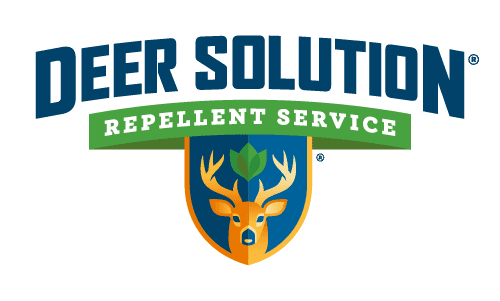Do deer eat English Hollies? For many property owners, this question is a pressing concern, especially when trying to maintain a beautiful landscape in areas frequented by deer. English Hollies (Ilex aquifolium), with their glossy, spiny leaves and vibrant red berries, are a popular choice for ornamental gardens. However, understanding deer behavior is crucial to protecting these and other plants in your garden. This article explores how regional variations in deer feeding habits, the ecological role of English Hollies, and practical, eco-friendly management strategies can help you create a landscape that thrives despite the challenges posed by deer.
Understanding Regional Variations in Deer Behavior
How Geography Influences Deer Diet Choices
Deer behavior isn’t uniform across regions, and their dietary preferences can vary significantly depending on where they live. In colder climates or areas with harsh winters, deer may resort to eating less preferred plants like English Hollies when their typical food sources become scarce. In contrast, regions with milder climates might see deer passing over these plants in favor of more abundant vegetation.
Local deer population density also plays a role. In areas where deer populations are high, competition for food can force deer to expand their diet, including nibbling on English Hollies. Gardeners should consider these regional factors when planning their landscapes, adapting their strategies to local conditions. By understanding how geography influences deer feeding habits, you can better protect your garden from becoming an unintended food source.
The Role of English Hollies in the Ecosystem
Beyond Deer Resistance: English Hollies as Ecosystem Contributors
English Hollies are more than just decorative plants; they play a significant role in the ecosystem. Their bright red berries are a valuable food source for birds, especially during the winter months when other fruits are scarce. These plants also provide shelter for various small wildlife, contributing to the overall health of the garden’s ecosystem.
A well-maintained and diverse garden ecosystem can naturally deter deer. When a garden supports a variety of wildlife, it creates a balanced environment where deer are less likely to focus on a single plant species, such as English Hollies. By promoting biodiversity in your garden, you not only enhance its beauty but also reduce the likelihood of deer damage.
Comparing English Hollies to Other Deer-Resistant Plants
How Do English Hollies Stack Up Against Other Deer-Resistant Plants?
When considering deer-resistant plants for your garden, English Hollies offer a unique combination of beauty and resilience. Their spiny leaves are a natural deterrent, making them less appealing to deer compared to softer, more palatable plants. However, younger, tender shoots of English Hollies can still be vulnerable, especially when deer are desperate for food.
In comparison to other deer-resistant plants, such as Lavender or Foxglove, English Hollies hold their own but may require additional protection depending on local deer behavior. Pairing English Hollies with other deer-resistant plants can create a more robust defense, enhancing the overall resilience of your garden. Understanding these plant traits allows you to strategically design a landscape that minimizes deer impact while maintaining visual appeal.
Real-Life Strategies: Insights from Gardeners
Gardener Stories: Winning the Battle Against Deer
Many gardeners have successfully integrated English Hollies into their landscapes, even in areas with high deer activity. For example, a gardener in the northeastern United States shared how they combined English Hollies with other deer-resistant plants, such as Boxwoods and Yews, to create a layered defense. This approach not only protected the English Hollies but also enhanced the garden’s aesthetic by adding depth and variety.
Another gardener in the Pacific Northwest emphasized the importance of regular maintenance and monitoring. By trimming the lower branches of their English Hollies and applying natural repellents during peak deer activity seasons, they were able to keep deer at bay. These real-life strategies highlight the importance of adaptability and proactive measures in managing deer in your garden.
Future Trends in Eco-Friendly Deer Management
Looking Ahead: Innovations in Sustainable Deer Management
As gardening practices continue to evolve, so too do the methods for managing deer. Emerging trends in eco-friendly deer management include the development of new, all-natural repellents that are more effective and longer-lasting than traditional options. Additionally, community-based deer management programs are gaining traction, where neighborhoods work together to implement consistent deer deterrent strategies across multiple properties.
For property owners, staying informed about these innovations is key to maintaining a healthy, deer-resistant garden. By combining the latest advancements in eco-friendly repellents with time-tested strategies, such as those offered by professional services like Deer Solution, you can ensure that your landscape remains vibrant and protected against deer damage.
Crafting a Sustainable and Deer-Resistant Landscape
Navigating the challenges of deer in your garden, especially when growing plants like English Hollies, requires a thoughtful, region-specific approach. By understanding the regional variations in deer behavior, recognizing the ecological role of English Hollies, and comparing them with other deer-resistant plants, you can design a landscape that stands up to deer pressure while supporting local wildlife.
The stories shared by gardeners across different regions demonstrate the importance of flexibility and proactive strategies in protecting your garden. As innovations in eco-friendly deer management continue to emerge, integrating these advancements into your approach will further enhance your garden’s resilience.
Ultimately, achieving a harmonious balance between your garden and local deer populations is possible with the right knowledge and tools. By embracing a comprehensive, sustainable strategy that includes the expertise of services like Deer Solution, you can cultivate a thriving landscape that remains beautiful and vibrant, season after season. For tailored advice and ongoing support, consider reaching out to Deer Solution to explore how their eco-friendly services can help protect your garden’s beauty and integrity.








